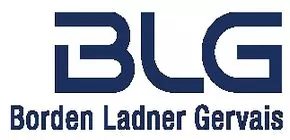Borden Ladner Gervais LLP are most popular:
- within Family and Matrimonial topic(s)
- with Senior Company Executives, HR and Finance and Tax Executives
- with readers working within the Banking & Credit, Insurance and Healthcare industries
The Reporter provides a monthly summary of Canadian federal legislative and regulatory developments of relevance to federally regulated financial institutions. It does not address Canadian provincial financial services legislative and regulatory developments, although this information is tracked by BLG and can be provided on request. In addition, purely technical and administrative changes (such as changes to reporting forms) are not covered.
May 2017
| Institution | Published | Title and Brief Summary | Status |
| Payments Canada | Published May 18, 2018 | Payments Canada: Changes to Our Rules and
Standards The Board and the Department of Finance approved the following amendments:
|
Effective |
| Financial Consumer Agency of Canada (FCAC) | Published April 13, 2017 | Final version: FCAC Supervision Framework and
Publishing principles for FCAC Decisions Based on stakeholder comments, FCAC amended the Framework in several areas. For example, FCAC clarified the distinction between tier 1 and tier 2 regulated entities and clarified the connection between tier 1 entities and the importance of their Market Conduct Profiles for determining the intensity of supervision. In addition, FCAC revised the list of factors that the Commissioner may consider when making public the name of a regulated entity that has committed a violation. |
Effective November 1, 2017 |
The content of this article is intended to provide a general guide to the subject matter. Specialist advice should be sought about your specific circumstances.
[View Source]

